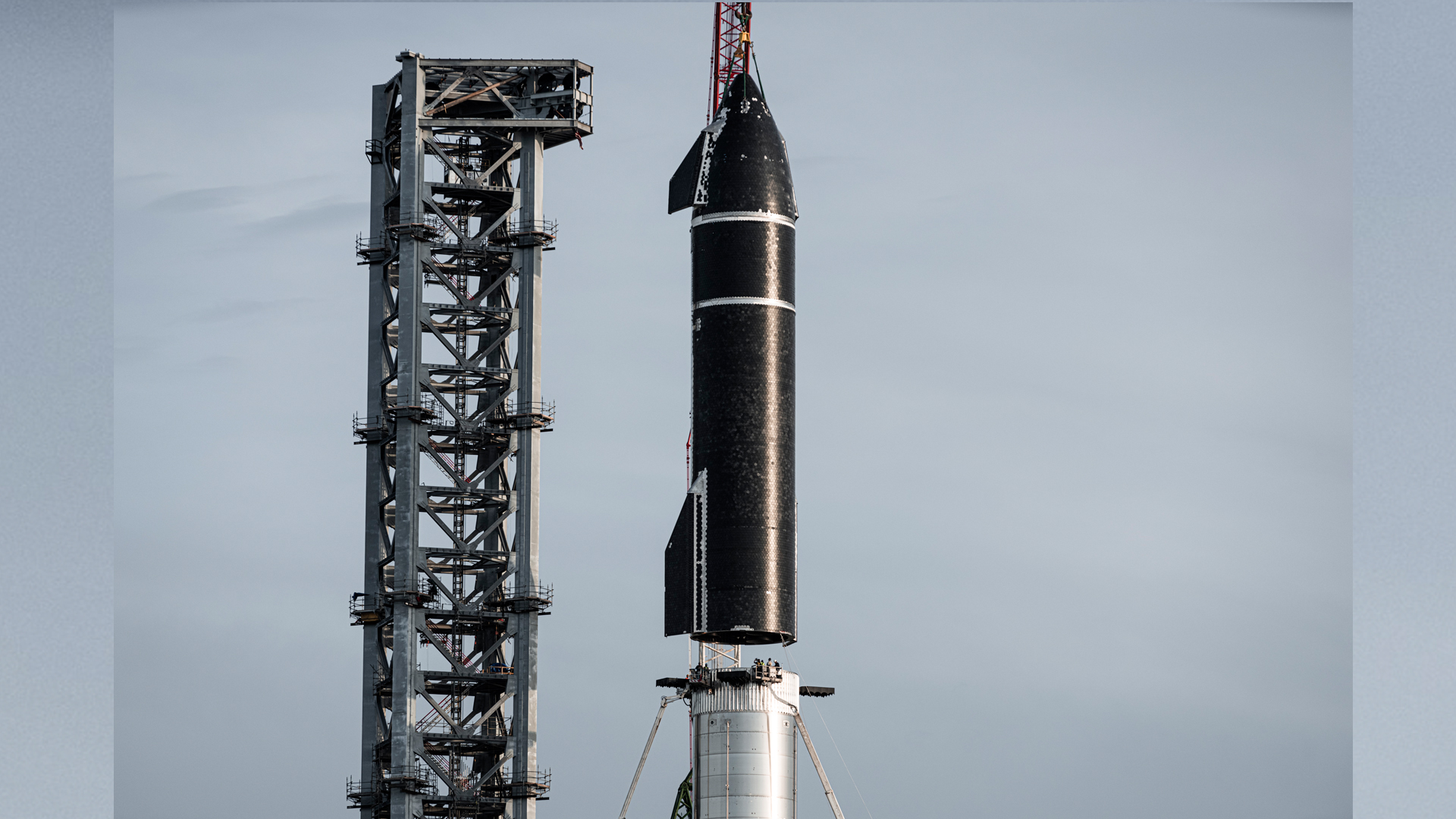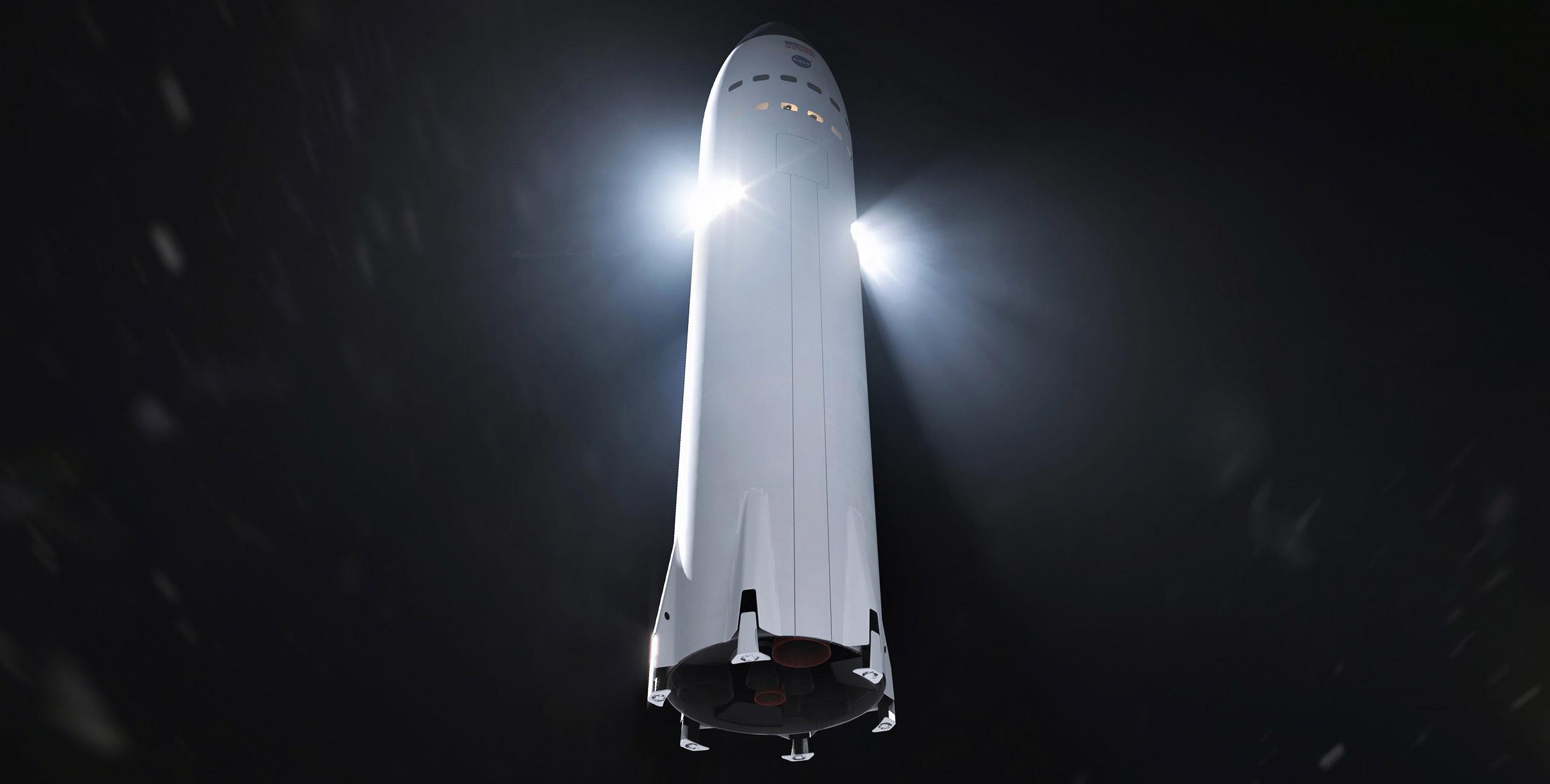
How Will SpaceX’s Starship Land On The Moon?
Since the very start of Starship development, SpaceX has been making fast progress on prototypes and the testing process. After winning the lunar lander contract SpaceX received a large sum of money meant for the development of a Moon lunar lander. However, this Starship model will have to be a bit different than the ones we have seen up to this point for multiple different reasons.
The Starship lunar lander will land on the moon using large RCS thrusters positioned towards the top of the spacecraft. Starship will also need self-leveling landing legs capable of landing on uneven surfaces. The higher thrusters are necessary for a safe and practical landing on the Moon due to factors such as the lack of atmosphere, the material on the ground, and more.
Landing on the Moon is no easy task and very few large agencies have been capable over the years. SpaceX has a lot of funding and plenty of ambition that has been present throughout Starship development. During the difficult landing process, SpaceX will have to consider many different factors. Each will have a direct effect on the design of future Starship lunar landers.
What Is Starship?

Starship is a rocket currently under development by SpaceX meant to be one of the biggest and most powerful in the world. Standing at 120m tall and 9m wide Starship consists of two stages. The first stage is called Super Heavy and will have around 33 engines in the future. The second stage is also called Starship and will be responsible for landing on the Moon.
Starship is also meant to be fully reusable. SpaceX’s goal is to make the rocket very affordable and have a consistent and quick turnaround time. For the time being SpaceX plan on catching Super Heavy out of the air and possibly Starship as well. SpaceX is planning on having multiple different types of Starships in the future. This would include a regular version, a lunar lander model, a fuel tanker, and more. The lunar lander model would be for missions to the Moon and back.
Lunar Lander Contract
SpaceX recently won a very large and important contract with NASA. NASA offered multiple different companies a large sum of money to develop a lunar lander for the upcoming Artemis mission and more. Some of the main companies involved included SpaceX, Blue Origin, Dynetics, and others. After each company had proposed its plan to NASA, the agency ended up picking what they thought was the best option. NASA choose SpaceX, winning the company a crucial $2.9 billion contract. This money is going directly towards Starship development and the technology onboard the future lunar lander.
Starship Lunar Lander Design Features

There are a lot of complications when trying to land on the Moon. This has caused SpaceX to make multiple changes throughout the Starship lunar lander model. Each one tries to solve a specific challenge when landing on the Moon.
RCS Thrusters – One of the most unique parts about the Starship lunar lander is the RCS Thrusters. RCS stands for reaction control system. On current SpaceX models, you can see Starship with multiple large thrusters towards the top of the rocket. One of the challenges of landing on the Moon is the lack of atmosphere. You practically need to use thrust when landing rather than a parachute like on Earth. The large RCS thrusters will do exactly that. As Starship approaches the surface of the Moon it will fire multiple thrusters to slow it down for landing.
The Starship lunar lander not only has these higher thrusters but also six Raptor engines. Specifically, the rocket will have three sea-level engines and three vacuum engines. The reason SpaceX cannot just use these engines for landing has to do again with the lack of atmosphere and the material on the ground. The Raptor engines are positioned at the very bottom of Starship. If these engines were used to land they would shoot up a massive amount of Moon material. The Raptor engine close to landing would be firing just a few feet away from the surface. The large thrusters positioned towards the top of Starship avoid that issue and keep a good distance. The Starship second stage is 50m tall ensuring that very little if any material is disturbed when landing.
Landing Legs – Throughout Starship development, we have seen multiple different landing leg designs and options. At first, with early tests such as SN5, SpaceX used small landing legs that would fold out prior to landing. These legs were designed to be crushed by the weight of Starship when landing. The legs did a good job for testing but are not a very viable future option. For the Starship lunar lander, there will need to be legs that are very sturdy and also capable of landing on uneven surfaces.
Unfortunately on the Moon, Starship will not be landing on a landing pad but instead the rough surface. If Starship’s landing legs were fixed and not adjustable based on the surface then SpaceX would have a big problem. This is why SpaceX and Elon have mentioned the use of self-leveling landing legs. These would deploy prior to landing and adjust based on the landing surface. This ensures that Starship will be straight up after landing and will not risk tipping over in the process.
Exit Hatch – Another unique part about the Starship lunar lander is the hatch or door used to get humans and cargo on and off the rocket. In animations and mock-up pictures provided by SpaceX, you can see a large door towards the top of the lunar lander. It also shows a mechanism similar to an elevator that would be used to get down and back up. This door would be around 35m high meaning the crew would not be able to use stairs. It is very likely that SpaceX will continue to change the design and make different parts of the lunar lander more convenient and reliable in the future.
Solar Panels – One final different aspect of the Starship lunar lander compared to other models are the solar panels. The Starship is shown having a large array of solar panels towards the top of the launch vehicle. SpaceX has provided multiple images with some showing solar panels at the very top and others showing solar panels closer towards the middle. Either way, solar panels are very important in helping provide energy to the vehicle and crew. This goes for the trip to the Moon, back, and while on the surface. NASA’s goal consists of setting up a more permanent presence of the Moon and staying there a lot longer. This encourages the addition of solar panels across the side of the Starship.
Conclusion
Landing on the Moon presents a lot of different challenges. Some of these include the lack of atmosphere, the mass amount of material on the ground, distance from Earth, uneven landing surface, and much more. However, SpaceX while only in early development already are thinking of possible solutions. These include large RCS thrusters towards the top of Starship, landing legs capable of leveling themselves, and more. As Starship development continues at a very fast pace SpaceX gets closer and closer towards the first Moon landing attempt. With the help of NASA’s funding, we are likely to see more work on the Starship lunar lander and a future Moon landing.
